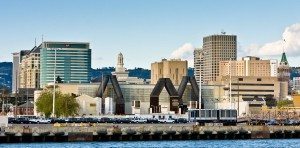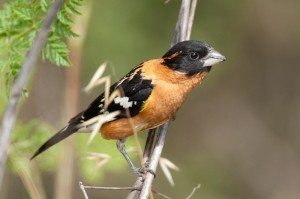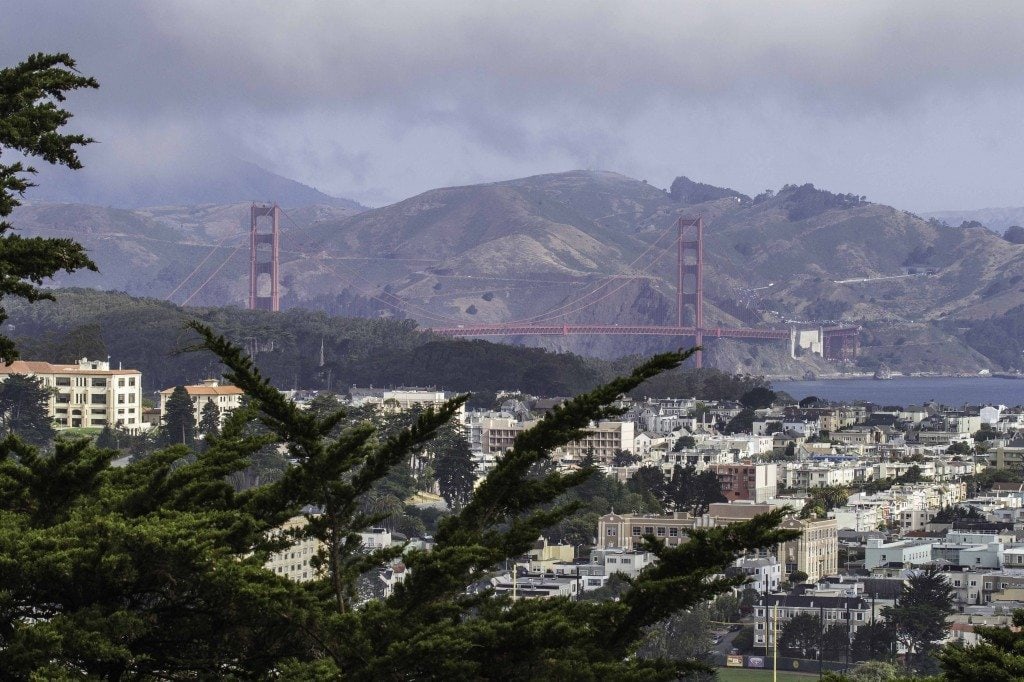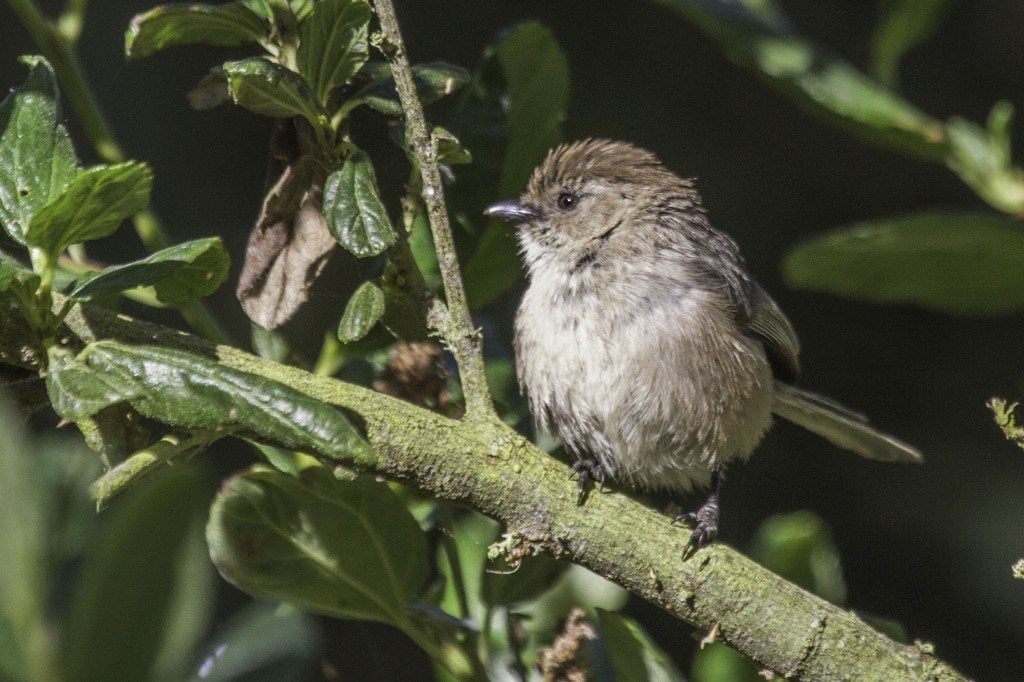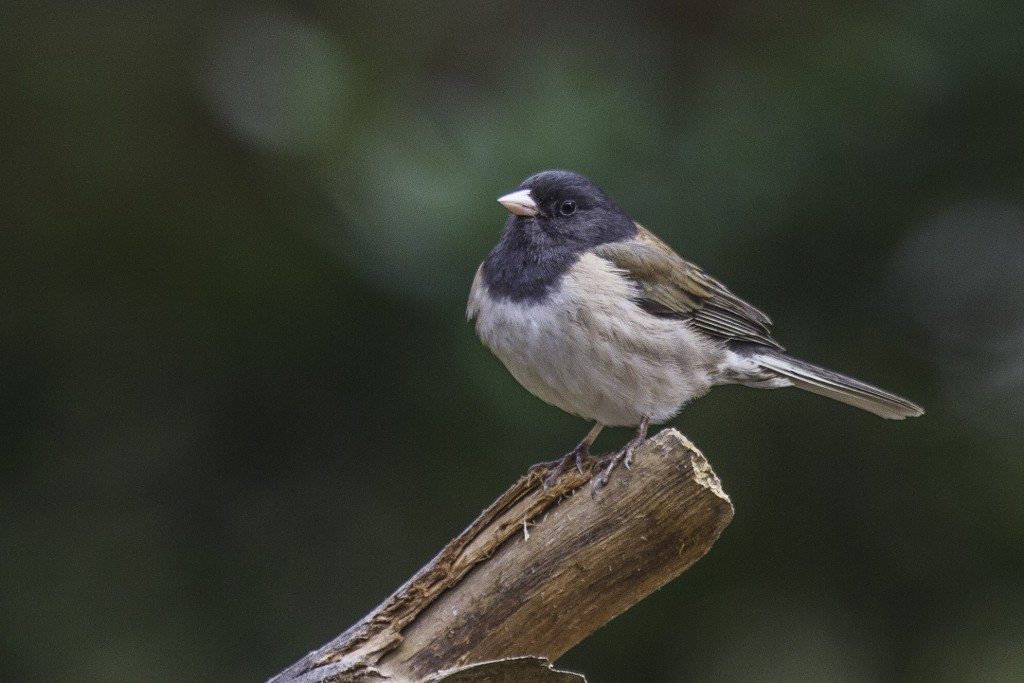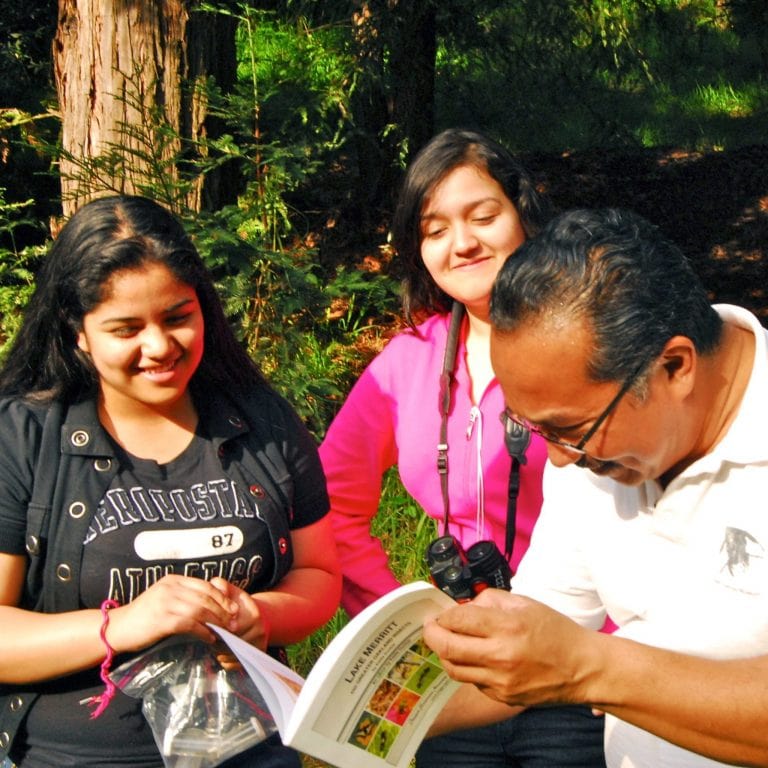Return of the Terns — and of the tern watchers
By Ilana DeBare
This past Saturday was the annual Return of the Terns celebration and bus tour, the one day each year when the breeding colony of endangered California Least Terns at Alameda Point is open to the public for viewing.
Three busloads of eager tern watchers toured the perimeter of the colony, guided by an expert U.S. Fish & Wildlife Service biologist. Alameda environmental blogger Richard Bangert reported:
“Adult terns could be seen busily bringing small fish to their young, and doting on the young chicks as they scampered around the sandy colony. The cool temperatures of the day made it less stressful for the young birds.
“The adults will continue bringing fish to their young and watching over them until they’re ready to fly south in early August. It looks like it will turn out to be a very good year for Alameda’s least tern colony, the largest in Northern California.”
Friends of the Alameda Wildlife Refuge, a GGBA committee, was a co-sponsor of Return of the Terns. FAWR also works year-round to maintain the terns’ habitat on the tarmac of the old Alameda naval air base. FAWR and GGBA continue to push for permanent protection of the terns’ nesting site.
You can follow ongoing developments at Alameda Point on Richard’s blog, the Alameda Point Environmental Report. Thanks to Richard and to photographer Rick Lewis for the following photos from Return of the Terns!
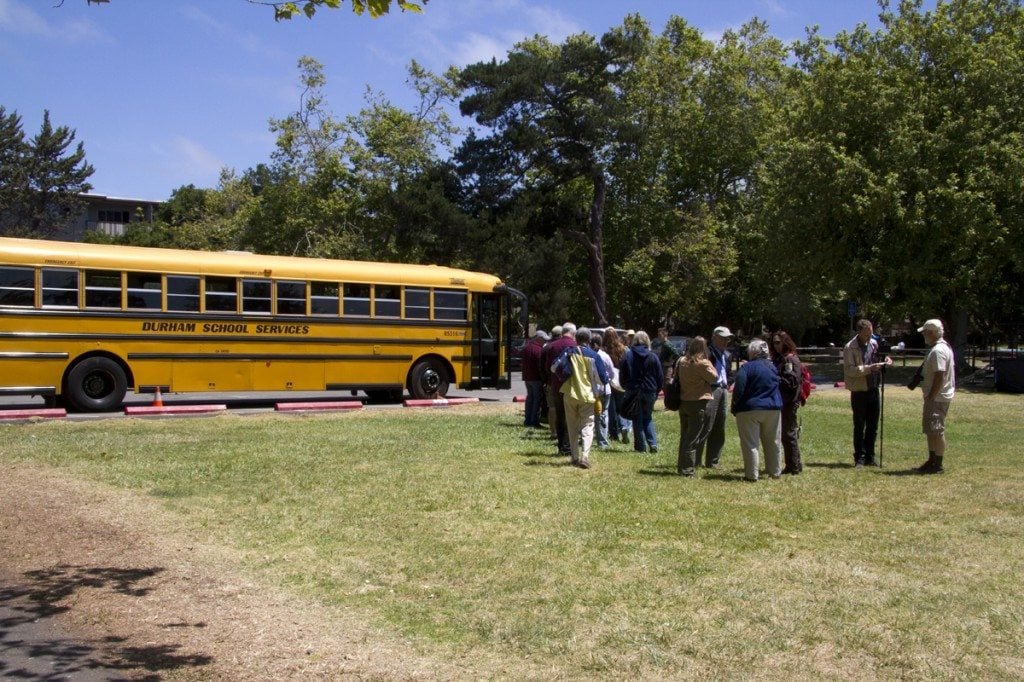 Boarding the tern bus / Photo by Rick Lewis
Boarding the tern bus / Photo by Rick Lewis
 Tern with fish / Photo by Rick Lewis
Tern with fish / Photo by Rick Lewis
 California Least Tern and chick / Photo by Rick Lewis
California Least Tern and chick / Photo by Rick Lewis
 Tern feeding chick next to shelter / Photo by Richard Bangert
Tern feeding chick next to shelter / Photo by Richard Bangert
 Terns in the air over the former naval air strip / Photo by Richard Bangert
Terns in the air over the former naval air strip / Photo by Richard Bangert
 California Least Tern and chicks / Photo by Rick Lewis
California Least Tern and chicks / Photo by Rick Lewis
 California Least Tern presenting fish to chick / Photo by Rick Lewis
California Least Tern presenting fish to chick / Photo by Rick Lewis
 Tern in flight / Photo by Rick Lewis
Tern in flight / Photo by Rick Lewis
Want more California Least Tern news and photos? The San Francisco Chronicle ran a story about “Tern Town,” the colony of Least Terns in Hayward, on June 19th.
East Bay Regional Park District biologists and volunteers built a welcoming site for terns out of clay, sand and oyster shells in a former salt pond. Then they played recordings of terns mating to attract the actual birds.
“We tried to make it a tern singles bar,” (biologist David) Riensche told Chronicle reporter Carolyn Jones.



